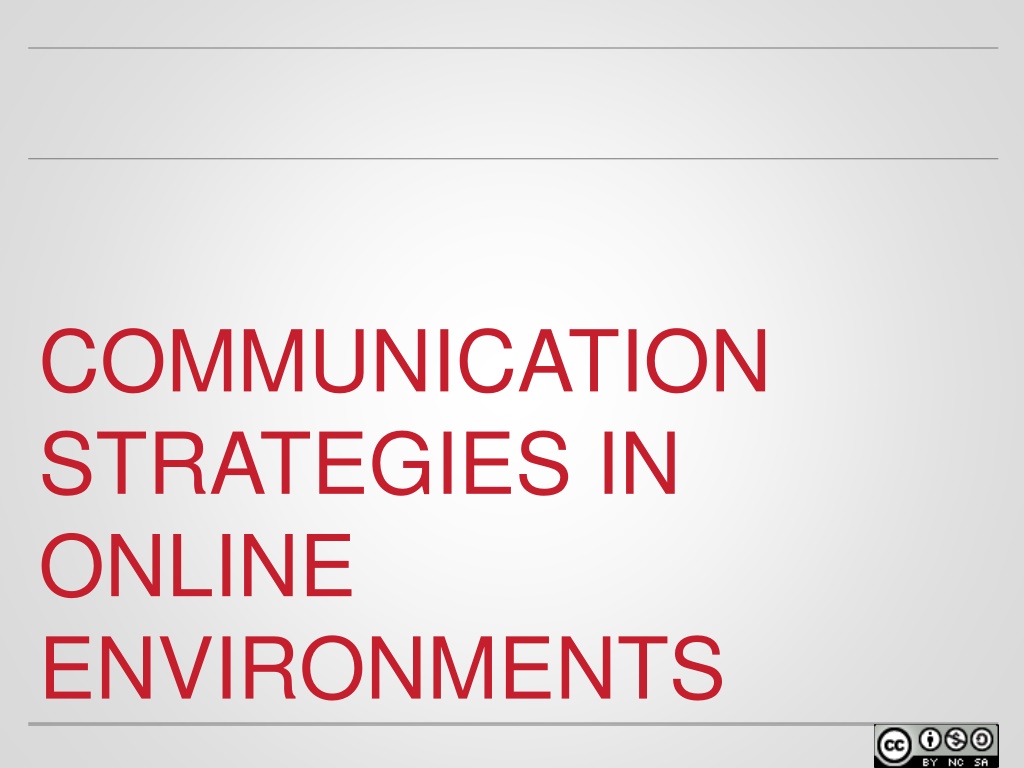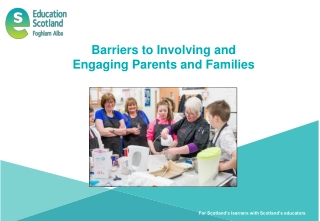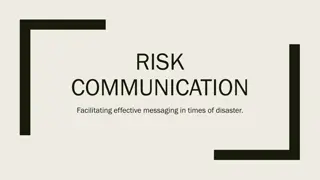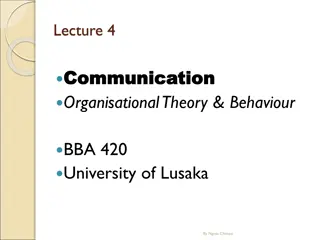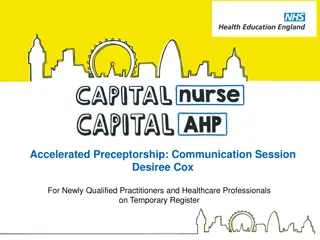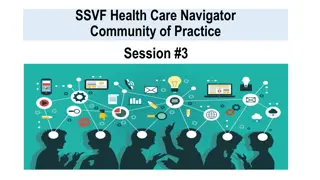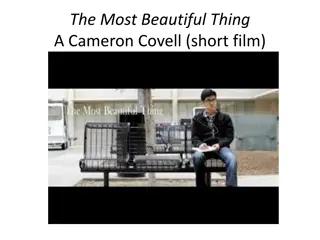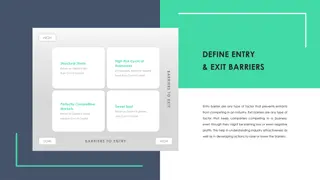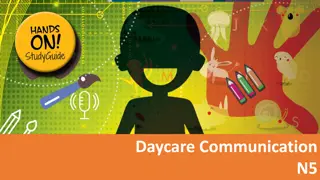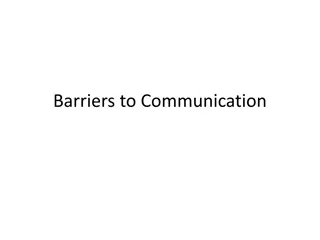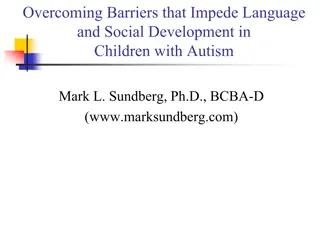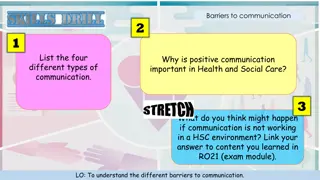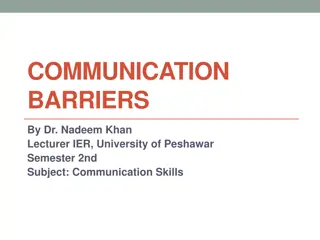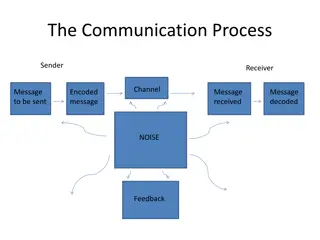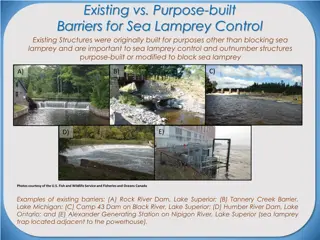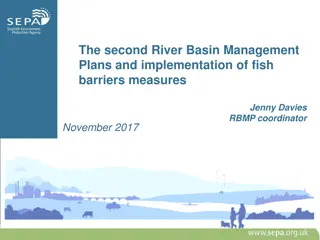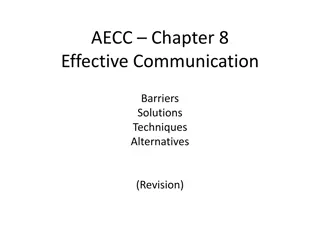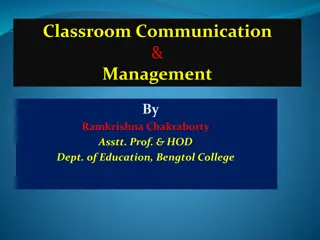Online Communication Strategies and Barriers
The dynamics of communication in online environments, focusing on strategies for enhancing clarity and interactivity. Learn about various types of online communication and their importance, as well as common barriers to effective communication. Dive into the concept of Community of Inquiry and its impact on interactions in educational settings.
Download Presentation

Please find below an Image/Link to download the presentation.
The content on the website is provided AS IS for your information and personal use only. It may not be sold, licensed, or shared on other websites without obtaining consent from the author.If you encounter any issues during the download, it is possible that the publisher has removed the file from their server.
You are allowed to download the files provided on this website for personal or commercial use, subject to the condition that they are used lawfully. All files are the property of their respective owners.
The content on the website is provided AS IS for your information and personal use only. It may not be sold, licensed, or shared on other websites without obtaining consent from the author.
E N D
Presentation Transcript
COMMUNICATION STRATEGIES IN ONLINE ENVIRONMENTS
WELCOME o Facilitator name Position at university Contact info
LEARNING OUTCOMES By the end of this module, you should be able to: o Distinguish between the various types of communication available in online contexts o Outline the importance of clarity in written expression o Design a communicative learning activity that will increase the level of interactivity in the online environment
AGENDA o Online courses as Communities of Inquiry o Importance of clarity in communication for blended and online courses o Types of: Asynchronous communication Synchronous communication
ONLINE COURSES AS COMMUNITIES OF INQUIRY
ONLINE COMMUNICATION BARRIERS Video o Barriers to online communication in educational settings
ACTIVITY: COMMUNICATION BARRIERS o Take a moment to think about your own experiences with communicating online. o What were the barriers to effectively communicating using online tools?
WHAT IS COMMUNITY OF INQUIRY? o Based on the Garrison, Anderson, Archer (2000) reading you were given, Community of Inquiry (CoI) is based on the interactions and the presence created between Students, Instructors and the Content.
COMMUNITY OF INQUIRY Communication Medium Based on: https://coi.athabascau.ca/coi-model/coi_model_small/
COGNITIVE, SOCIAL, TEACHING PRESENCE Presence Categories Indicators Trigger Exploration Integration Sense of puzzlement Information exchange Connecting ideas Cognitive Emotional expression Open communication Group cohesion Emoticons Risk free expression Encouraging collaboration Social Instructional management Building understanding Direct instruction Defining discussion topics Sharing personal meaning Focusing discussion Teaching Source: Garrison, D. R., Anderson, T., & Archer, W. (2000). Critical inquiry in a text-based environment: Computer conferencing in higher education.
DEVELOPING AN ONLINE COMMUNITY Video o Strategies for developing an online community
DISCUSSION o How would you apply the community of inquiry model to your course? Think of at least one strategy you can use to establish cognitive presence, social presence and teaching presence in your course.
INTERACTION WITH CONTENT Content
CLARITY OF WRITTEN EXPRESSION o Know exactly what the instructor wants o Choose words carefully o Be aware of how everybody interprets things differently Source: Vonderwell, S. (2002). An examination of asynchronous communication experiences and perspectives of students in an online course: a case study. The Internet and Higher Education, 6, 77-90. Retrieved from http://www.anitacrawley.net/Articles/Vonderwell(2003).pdf
TYPES OF SYNCHRONOUS AND ASYNCHRONOUS COMMUNICATION
COMMUNICATION VIDEOS Videos o Has education changed since the industrial revolution? o Effective Online Discussions
ACTIVITY: COMMUNICATION VIDEOS o How can the communication strategies from the second video could be implemented into your course? o How have those ideas been used in this module?
ACTIVITY: COMMUNICATION TOOLS o As a class, brainstorm a list of communication tools that are available at your institution. Communication Tools Synchronous Tools Asynchronous Tools
ACTIVITY: COMMUNICATION TOOLS o Individually, think about a goal/outcome for your course and an activity that will help you reach this goal. o Using the list generated earlier, which communication tools do you think will work for the activity and help you reach your goal?
HOMEWORK o Taking the feedback you were given, design a communicative activity for your course/module.
SUMMARY o Community of Inquiry model provides a way to structure interactions in online learning environments based on cognitive, social and teaching presence. o Establishing and maintaining cognitive, social, and teaching presence is associated with high levels of deep and meaningful learning.
SUMMARY o In online learning, clarify of written expression is so important because students experience stronger interaction with content than with peers and instructors. o There are a variety of synchronous and asynchronous tools you can use to improve online communication and support your learning outcomes.
THANK YOU o Questions? o Comments? o Help? Contact information facilitator s and departmental
REFERENCES Chao, T. (2004) Instructional Strategies for Creating Meaningful Online Dialogue. Retrieved from https://faculty.myrru.royalroads.ca/sites/default/files/meaningful online dialogue.pdf COFA.online. (2011, February 22). Conducting Effective Online Discussions. Retrieved April 9, 2014, from http://online.cofa.unsw.edu.au/learning-to-teach-online/ltto- episodes?view=video&video=235. drcreyn. (2012, March 10). How do you relate to the CoI? Retrieved April 9, 2014, from https://www.youtube.com/watch?v=pyEQ3as- Q38. 1. 2. 3.
REFERENCES Freedman, S.C., Tello, S.F. & Lewis, D. (2013). Strategies for Improving Instructor-Student Communication in Online Education. In Virtual Education: Cases in Learning and Teaching Technologies (Chapter 10). Retrieved from http://faculty.uml.edu/stello/IRMA0802.pdf. Garrison, D. R., Anderson, T., & Archer, W. (2000). Critical inquiry in a text-based environment: Computer conferencing in higher education. The Internet and Higher Education, (2), 87-105. Retrieved from http://auspace.athabascau.ca/bitstream/2149/739/1/critical_inqu iry_in_a_text.pdf. Lewis, J. (2013, May 22). Communication Strategies for Managing Online Teaching. Retrieved April 9, 2014, from http://www.youtube.com/watch?v=F48JylfT7Bk. 4. 5. 6.
REFERENCES MacIntyre, S. (2011). Conducting Effective Online Discussions. Learning to Teach Online. Retrieved from http://online.cofa.unsw.edu.au/sites/default/files/episode- pdf/Discussions_LTTO.pdf. PSU World Campus Faculty Development. (2010, September 27). Planning Communication Strategies. Retrieved April 9, 2014, from http://www.youtube.com/watch?annotation_id=annotation_1792 62&feature=iv&src_vid=T5vwKFt3B5w&v=PtqX5XqZZJo. TeacherStream, LLC. (2009). Mastering Online Discussion Board Facilitation. Retrieved from http://www.edutopia.org/pdfs/stw/edutopia-onlinelearning- mastering-online- discussion-board-facilitation.pdf Vonderwell, S. (2002). An examination of asynchronous communication experiences and perspectives of students in an online course: a case study. The Internet and Higher Education, 6, 77-90. Retrieved from http://www.anitacrawley.net/Articles/Vonderwell(2003).pdf 7. 8. 9. 10.
